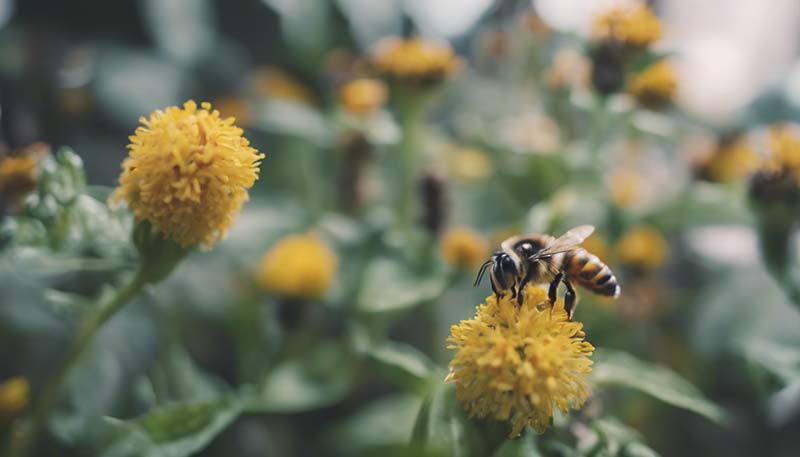Indoor Gardening and Sustainability: How to Support Pollinators
Sustainability is a growing concern for many as we become more aware of our environmental footprint and the impact it has on the planet. One area where this is particularly relevant is gardening, which can be a significant contributor to both local and global ecosystems. In this article, we'll explore how indoor gardening can contribute to sustainability and the importance of supporting pollinators within this context.
The Importance of Pollinators
Pollinators, such as bees, butterflies, and hummingbirds, play a crucial role in our ecosystem. They are responsible for pollinating plants, which is essential for the production of fruits, vegetables, and seeds. Without pollinators, we would lose a significant portion of our food supply, as well as many plants that provide habitats for other wildlife.
Advertisement
Why Indoor Gardening Supports Sustainability
Indoor gardening can be a sustainable alternative to traditional outdoor gardening for several reasons:
- Control over the environment: Indoor gardens can be grown in a controlled environment, which allows for the minimization of water and energy use.
- Year-round growing: Indoor gardens can produce food year-round, reducing the need for imported produce and lowering the carbon footprint associated with transportation.
- Less pesticide use: Indoor gardens are less susceptible to pests, reducing the need for harmful pesticides that can harm pollinators and the environment.
- Space efficiency: Indoor gardens can be more space-efficient, allowing for greater food production in a smaller area.
How to Create a Pollinator-Friendly Indoor Garden
To support pollinators in your indoor garden, consider the following tips:
- Choose the right plants: Select plants that are known to attract pollinators, such as flowering herbs, fruits, and vegetables.
- Provide a variety of flowers: Offer a diverse range of flowers with different shapes, colors, and scents to attract a variety of pollinators.
- Avoid harmful chemicals: Refrain from using pesticides and other chemicals that can harm pollinators.
- Create a welcoming habitat: Provide a safe and welcoming habitat for pollinators by including water sources and sheltered areas.
- Educate yourself: Learn about the specific needs of different pollinators and how to best support them in your indoor garden.
Benefits of a Pollinator-Friendly Indoor Garden
Creating a pollinator-friendly indoor garden not only supports the health of pollinator populations but also has several benefits for your garden:
- Increased pollination: A diverse population of pollinators can lead to increased pollination and better yields for your plants.
- Improved plant health: Pollinators can help to improve the overall health of your plants by transferring nutrients and pollen between flowers.
- Biodiversity: A diverse range of pollinators can contribute to a more diverse and resilient ecosystem within your indoor garden.
- Aesthetic appeal: Attracting pollinators can add visual interest and beauty to your indoor garden, with the added benefit of observing these fascinating creatures at work.
Conclusion
Indoor gardening can be a sustainable and environmentally friendly way to grow plants while also supporting pollinators. By creating a pollinator-friendly indoor garden, you can contribute to the health of these essential creatures and enjoy the benefits of increased pollination and improved plant health. It's a small step towards a more sustainable future and a way to make a positive impact on the environment.
Further Reading
Note: This article is for informational purposes only and should not be considered as professional advice. Always consult with a professional or conduct thorough research before starting an indoor garden.

Comment